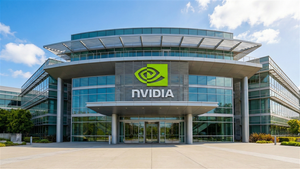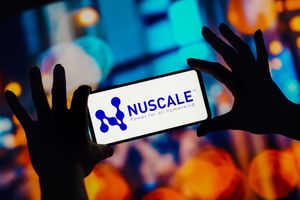Meta Platforms Soars on Q2 Earnings, Bets Big on 'Personal Superintelligence'

Meta Platforms (NASDAQ: META) delivered an exceptionally strong second quarter for 2025, significantly surpassing market expectations with a robust 22% year-over-year revenue increase and a remarkable beat on earnings per share. The stellar financial performance, largely fueled by the company's aggressive and successful integration of artificial intelligence (AI) into its core advertising business, has reinvigorated investor confidence. At the heart of Meta’s ambitious future strategy is CEO Mark Zuckerberg's bold vision: to build "personal superintelligence for everyone," a concept that promises to revolutionize human-AI interaction.
This strategic pivot, backed by monumental investments in AI infrastructure and talent, highlights Meta's determination to lead the next computing paradigm. While the immediate gains are evident in soaring ad revenues and increased user engagement, the long-term implications of Meta's AI-first approach could reshape the competitive landscape of social media, advertising, and the broader technology industry, ushering in an era where AI becomes an even more integral and personalized part of daily life.
Meta's AI-Fueled Renaissance: Strong Q2 Results and a Vision for Superintelligence
Meta Platforms' Q2 2025 earnings report, released on July 30, 2025, painted a picture of a company in a resurgence, driven by its strategic focus on AI. The tech giant reported an impressive total revenue of $47.52 billion, a substantial 22% increase compared to the same period last year, comfortably beating analyst consensus estimates of approximately $44.55 billion. This revenue growth translated into diluted earnings per share (EPS) of $7.14, surging 38% year-over-year and significantly outperforming analyst expectations of $5.75 to $5.92. Net income also saw a healthy 36% rise to $18.34 billion, with the operating margin improving to 43% from 38% in Q2 2024.
The advertising engine, the lifeblood of Meta’s business, was the primary beneficiary of its AI investments, with ad revenue increasing by 21% to $46.56 billion. This growth was propelled by a dual positive trend: an 11% increase in ad impressions across Meta's Family of Apps (Facebook, Instagram, WhatsApp, Messenger) and a 9% rise in the average price per ad. This indicates that Meta’s AI-powered advertising tools are not only increasing the volume of ads shown but also their effectiveness and value for advertisers, improving targeting, efficiency, and conversion rates. Daily Active People (DAP) across Meta’s apps reached an average of 3.48 billion in June 2025, a 6% year-over-year increase, signaling robust user engagement, which in turn feeds the advertising ecosystem. The company also declared a quarterly cash dividend of $0.525 per share, payable on September 29, 2025.
CEO Mark Zuckerberg has unequivocally stated that AI is Meta's "north star" and the foundational computing paradigm for its future. His vision extends beyond mere efficiency gains; he is actively pursuing the development of "personal superintelligence for everyone in the world." This concept involves leveraging Meta's vast AI resources to create artificial intelligence that acts as an extension of individuals, empowering them to achieve personal goals and direct AI towards their values. To accelerate this vision, Meta has undertaken colossal investments. Capital expenditures in Q2 2025 alone hit $17.01 billion, more than doubling from the prior year, and the company has raised its full-year 2025 CapEx guidance to an eye-watering $66 billion to $72 billion. These funds are largely earmarked for building advanced AI infrastructure, including next-generation data centers like the 1-gigawatt Prometheus facility in Ohio and the 5-gigawatt Hyperion cluster in Louisiana, aimed at providing unparalleled compute power.
Meta's AI push has involved a series of strategic moves in 2025, including a $14.3 billion investment for a 49% stake in Scale AI in June, bringing Scale AI's CEO, Alexandr Wang, to lead Meta's new "Superintelligence" unit. In July, Zuckerberg announced the creation of Meta Superintelligence Labs (MSL) and an aggressive recruitment drive, poaching top AI researchers from rivals like OpenAI, Google DeepMind, and Anthropic. The company also acquired Play AI and WaveForms to bolster its voice and audio language model capabilities. By September 2025, Meta Connect showcased new AI-integrated Ray-Ban Meta Smart Glasses with a full-color display and a Meta Neural Band, signaling the company's intent to make wearables the primary interface for its personal superintelligence. The market's initial reaction was overwhelmingly positive, with Meta's stock surging 8% to 12% in after-hours trading following the earnings release, adding an estimated $175-$180 billion to its market capitalization and pushing its valuation to new record highs.
The AI Divide: Who Wins and Who Risks Losing in Meta's Ascent
Meta Platforms’ (NASDAQ: META) aggressive AI strategy and its exceptional Q2 2025 performance have drawn clear lines between potential winners and those facing increased competitive pressure across various sectors. The company itself is undeniably the primary beneficiary of its strategic pivot.
The Winners' Circle:
Meta Platforms (NASDAQ: META) itself sits at the top. Its core advertising business is thriving, with AI-powered tools like the Andromeda recommendation engine and Advantage+ campaigns significantly optimizing ad targeting and performance. These tools drove a 21% increase in ad revenue in Q2 2025, showing that AI is directly translating into financial success. The company’s vision for "personal superintelligence" also positions it for long-term dominance, especially as it integrates AI into products like Ray-Ban Meta smartglasses, which have seen tripled sales year-over-year. This success allows Meta to attract and retain top AI talent through its open-source Llama models and strategic acquisitions, fostering a robust AI ecosystem.
AI Chip Manufacturers and Infrastructure Providers are also massive winners. Meta’s colossal capital expenditures, ranging from $66 billion to $72 billion in 2025, primarily for AI infrastructure, translate into significant demand for specialized hardware. Nvidia (NASDAQ: NVDA), the dominant player in AI Graphics Processing Units (GPUs), stands to gain immensely from Meta’s plans to deploy over 1.3 million GPUs by 2025. Advanced Micro Devices (NASDAQ: AMD) is also gaining ground, with Meta adopting its MI300X accelerator as an alternative. Companies like Super Micro Computer (NASDAQ: SMCI), which designs high-performance server technology, are poised to benefit from Meta's construction of vast AI superclusters like Prometheus and Hyperion. Furthermore, financial institutions like Pimco (PPO) and Blue Owl Capital (OWL) involved in financing these massive projects, and utility companies such as Entergy (ETR), which supply power to these energy-intensive data centers, are also direct beneficiaries.
Advertisers and Small to Medium-sized Businesses (SMBs) stand to gain from Meta's advanced AI. The democratization of sophisticated ad targeting through AI-driven tools can help smaller brands compete more effectively. Advertisers seeking higher efficiency and return on investment (ROI) will benefit from automated ad bidding and optimization, with over 1 million advertisers now using Meta's generative AI for ad creation, achieving 11% higher click-through rates and 7.6% higher conversion rates. The integration of AI agents into WhatsApp and Instagram also promises enhanced customer interactions and sales support.
The Potential Losers and Those Under Pressure:
Competitors in Social Media and AI face intensified pressure. While Alphabet (NASDAQ: GOOGL) also invests heavily in AI for its advertising and cloud services, Meta's real-time, personalized AI gives it a sharp edge in dynamic advertising. Google's Q2 2025 ad revenue growth of 10.4% year-over-year, though substantial, suggests Meta’s AI-driven ad monetization is gaining ground. TikTok faces a formidable opponent in Meta’s AI-enhanced content recommendations and its successful deployment of Reels, which has effectively blunted TikTok’s once-unstoppable growth. Other AI competitors like OpenAI, Microsoft, and Anthropic, while leaders in general AI, will contend with Meta’s open-source Llama models and its push into "personal superintelligence," which targets a distinct, consumer-centric AI frontier. Meta's new Business AI unit also directly competes with established enterprise AI players.
Traditional Advertising Roles and Agencies may see a shift. The full automation of ad creation—including imagery, video, and text—and targeting could reduce the need for human copywriters, designers, and media buyers, raising questions about the future of marketing jobs. Agencies and large brands might be wary of ceding creative control to AI, given concerns about quality, brand safety, and authenticity.
Other Ad Tech Competitors such as Snap (NYSE: SNAP), Pinterest (NYSE: PINS), and Reddit (NYSE: RDDT) will face immense pressure to accelerate their own AI investments to keep pace with Meta's capabilities, further consolidating the market around AI leaders.
AI's New Horizon: Meta's Bet Reshaping the Tech Landscape
Meta Platforms' strong Q2 2025 performance and its aggressive pursuit of "personal superintelligence" are not merely corporate successes but significant markers in the broader technological landscape. This dual triumph underscores how deeply AI is integrating into the foundational economics of tech giants and signals a potential paradigm shift in human-computer interaction.
Broader Industry Trends and Meta's Position:
Meta's AI strategy is deeply embedded in the overarching industry trend of a "compute arms race." Major players like Google (NASDAQ: GOOGL), Microsoft (NASDAQ: MSFT), and OpenAI are all pouring billions into expanding their AI capabilities and infrastructure. However, Meta's distinctive focus on "personal superintelligence"—AI assistants that feel like an extension of oneself—sets it apart. While many rivals prioritize large language models for enterprise automation or general knowledge, Meta emphasizes individual empowerment, creativity, and social connection. This aligns with a growing desire for highly personalized and proactive AI, seamlessly integrated into daily life, potentially through wearable devices like smart glasses, which Meta champions as the next computing platform. The success of Meta's AI-powered ad tools, which contributed to its 21% ad revenue growth, also reflects a broader industry movement where data and algorithms are meticulously leveraged to enhance existing markets, creating a self-reinforcing cycle of investment and monetization.
Ripple Effects on Competitors and Partners:
The ripple effects of Meta's AI advancements are far-reaching. For social media competitors like TikTok and Snap (NYSE: SNAP), Meta's enhanced AI, particularly in content recommendations and ad targeting, could further solidify its dominance, making it harder to compete for advertiser spend and user engagement. The integration of deeply personalized AI could offer a unique user experience that rivals struggle to replicate. In the ad tech sector, Meta's AI-powered ad machine intensifies competition, potentially disadvantaging companies reliant on less sophisticated AI. For other AI developers like OpenAI and Google DeepMind, while Meta is not directly competing in all areas, its open-source LLaMA models are democratizing access to cutting-edge AI, fostering an ecosystem that could challenge the closed systems of some competitors, while intensifying the global talent war for AI experts. Partners, including developers and content creators, could find new opportunities to build personalized experiences within Meta's AI-powered ecosystem and metaverse. Hardware manufacturers are also set to benefit, particularly those in the smart glasses and wearable AI space, as Meta pushes its Ray-Ban Meta smart glasses as the interface for personal superintelligence.
Regulatory and Policy Implications:
Meta's aggressive AI push and its "personal superintelligence" vision raise significant regulatory and policy concerns. The concept of an AI intimately understanding a user's goals and surroundings, especially through continuously monitoring devices like smart glasses, intensifies data privacy debates. Regulators will scrutinize how this highly personal data is collected, stored, processed, and used. Concerns about ethical AI and bias are also paramount, particularly regarding the potential for unintended consequences or inherent biases in self-improving AI systems. Antitrust and monopolization risks loom, as Meta's substantial investments and talent acquisitions could lead to concerns about an unfair advantage in the burgeoning AI space. Existing regulations like the EU's Digital Markets Act (DMA) could impact Meta's ad revenue and operations, affecting how its AI-powered advertising can target users. Furthermore, Zuckerberg's own acknowledgment of an "AI bubble" highlights the speculative nature of current investments, potentially attracting regulatory attention if financial returns do not materialize as expected.
Historical Precedents and Comparisons:
The current AI boom and Meta's investment strategy draw parallels to historical tech shifts. Zuckerberg's comparison to the dot-com bubble of the late 1990s highlights the speculative investment and rapid infrastructure build-out. While the bubble burst, the underlying physical networks created proved invaluable for future internet growth. Similarly, Meta's massive AI infrastructure, potentially reaching $600 billion by 2028, could form the backbone of future computing platforms. The shift resembles the mobile computing revolution, where smartphones replaced desktops as primary interfaces. Meta's bet on smart glasses as the next primary computing platform for AI echoes this paradigm shift. Finally, the "AI arms race" is akin to past platform wars (e.g., Windows vs. Mac, Android vs. iOS), where companies fiercely compete for user base and developer ecosystems. Meta's open-source LLaMA strategy can be seen as an attempt to foster an ecosystem around its AI, similar to how Android gained traction by being open-source.
The Road Ahead: Navigating the Dawn of Personal Superintelligence
Meta Platforms' extraordinary Q2 2025 results and its audacious embrace of "personal superintelligence" have charted a new course for the company, promising both immense growth and significant challenges. The path forward will be defined by Meta's ability to execute its ambitious AI strategy, adapt to evolving market dynamics, and navigate a complex regulatory and ethical landscape.
Short-Term and Long-Term Possibilities:
In the short term, Meta is poised for continued growth through its AI-powered advertising. The company's goal to fully automate ad creation and targeting by the end of 2026, where AI handles everything from content generation to budget allocation, promises further efficiencies and higher returns for advertisers. The Meta AI app, already boasting 400 million monthly active users, is expected to drive engagement across its Family of Apps, while the burgeoning sales of Ray-Ban Meta smart glasses indicate a growing market for AI-integrated wearables. The monetization of WhatsApp and the Threads platform will also contribute to near-term revenue diversification.
For the long term, Meta’s vision hinges on the realization of "personal superintelligence," seamlessly integrated into smart glasses and other devices, empowering users in unprecedented ways. This requires monumental capital expenditures, with plans for $66-72 billion in 2025 alone, as part of a projected $600 billion investment by 2028, to build vast AI superclusters. The development of custom silicon chips will also be crucial for efficient AI model training and operation. While the metaverse has taken a backseat to AI, it remains a complementary long-term goal, where AI will enhance immersive experiences within AR/VR. This ambitious roadmap aims to solidify Meta's leadership in the next computing paradigm, potentially creating new, diversified revenue streams beyond advertising through premium AI features or enterprise solutions.
Strategic Pivots and Adaptations:
Meta has already demonstrated its agility by pivoting from a metaverse-first to an "AI-first" strategy, recognizing the immediate impact of AI on its core business. The reorganization of its AI operations under Meta Superintelligence Labs (MSL) and the appointment of Alexandr Wang as Chief AI Officer signify a disciplined approach to talent and infrastructure. While Meta has championed open-source AI with its Llama models to build a broad ecosystem, there may be a strategic adaptation towards a more closed approach for its most advanced "superintelligence" capabilities, balancing accessibility with control over its cutting-edge innovations. The company will also need to carefully manage the financial drain from its Reality Labs division, which continues to incur significant losses, ensuring that AI integration can eventually turn these ventures profitable.
Market Opportunities and Challenges:
Market opportunities abound, especially in emerging markets like India, where Meta AI is seeing strong user engagement. The global availability of Meta AI across multiple countries and languages presents a chance to "leapfrog" traditional development stages. However, challenges are significant. The "AI arms race" with tech giants like Google (NASDAQ: GOOGL), OpenAI, Microsoft (NASDAQ: MSFT), and Apple (NASDAQ: AAPL) is intense, demanding continuous innovation and substantial investment. Ethical AI concerns, particularly regarding the privacy and commercialization of highly personalized AI, alongside potential job displacement and the erosion of genuine human connections, will require careful navigation. Financially, the enormous capital expenditures carry risks of overspending if breakthroughs or monetization don't materialize as expected, exacerbated by persistent losses from Reality Labs and the potential for economic downturns to reduce ad spending. Geopolitical tensions and chip shortages could also disrupt infrastructure deployments. Regulatory scrutiny, including antitrust concerns and data privacy regulations, poses a constant threat, potentially leading to fines or restrictions on Meta's business practices.
Potential Scenarios and Outcomes:
Meta's AI initiatives present a high-risk, high-reward scenario. An optimistic outcome sees Meta solidifying its position as the undisputed leader in consumer AI, with its ecosystem dominating digital interaction, leading to unprecedented growth and profitability. Conversely, a challenging scenario could emerge if Meta struggles to scale and monetize its AI investments, compounded by regulatory headwinds, integration difficulties, and persistent losses from Reality Labs, pressuring profitability. The high-stakes gamble requires balancing speculative AI research with immediate, revenue-generating applications and disciplined cost control. Regulatory intervention, intensified by growing market dominance, could force strategic adaptations, impacting how Meta operates or monetizes its platforms. Ultimately, Meta's future hinges on its capacity for sustained innovation, efficient execution, and agile adaptation to the rapidly evolving technological, ethical, and market landscapes, particularly as it strives to bring "personal superintelligence" to the world.
The AI Tide: A New Era for Meta and the Digital Economy
Meta Platforms' Q2 2025 earnings report not only reaffirmed the resilience of its core advertising business but also loudly declared its unwavering commitment to an "AI-first" future. The company's exceptional financial performance, marked by significant revenue and EPS growth, is a direct testament to the immediate benefits of integrating sophisticated AI into its platforms. Yet, the real story lies in CEO Mark Zuckerberg’s audacious vision of "personal superintelligence," which promises to be the driving force behind Meta's next era of innovation and influence.
Summary of Key Takeaways:
The key takeaways from Q2 2025 are clear: Meta (NASDAQ: META) is a powerhouse of AI-driven monetization. A 22% year-over-year revenue surge and a 38% increase in EPS underscore the efficacy of its AI-powered ad tools, which are optimizing impressions and pricing. The aggressive capital expenditure, set to reach $66-72 billion in 2025, highlights a monumental investment in AI infrastructure, including superclusters and custom silicon, to support its long-term ambitions. The early success of products like the Meta AI app and Ray-Ban Meta smart glasses indicates promising avenues for user adoption and future growth beyond traditional social media. Meta's strategic acquisitions and talent recruitment further solidify its position in the competitive AI landscape.
Assessment of the Market Moving Forward:
The market is rapidly re-evaluating Meta, transitioning from a metaverse-centric view to recognizing it as a formidable AI leader. Its ability to extract value from AI in advertising places it ahead of many competitors in immediate monetization. However, the sheer scale of its AI investments, particularly outside the proven ad revenue streams, presents both massive upside potential and considerable financial risk. The "AI arms race" will intensify, pushing competitors like Alphabet (NASDAQ: GOOGL) and TikTok to further accelerate their own AI advancements. The broader digital economy will likely see a proliferation of personalized AI services, with Meta aiming to set the standard for deeply integrated, user-centric AI experiences.
Final Thoughts on Significance and Lasting Impact:
Zuckerberg's "personal superintelligence" vision is more than a technological endeavor; it's a philosophical statement about the future of human-AI collaboration. If successful, it could fundamentally alter how individuals interact with technology, moving beyond passive consumption to active, personalized empowerment. Smart glasses, envisioned as the primary interface for this superintelligence, could usher in a new computing platform, much like smartphones revolutionized the digital world. The lasting impact could be profound, augmenting human capabilities and reshaping daily life. However, this transformative potential comes with significant ethical dilemmas concerning data privacy, algorithmic bias, and the societal implications of such deeply integrated AI, requiring Meta to prioritize responsible development alongside rapid innovation.
Advice for Investors in the Coming Months:
Investors should closely monitor several critical indicators. First, track the ROI on AI investments: Beyond ad revenue, look for clear pathways for Meta to generate sustainable, diversified revenue streams directly from its substantial AI investments beyond ad optimization. Second, observe user adoption and engagement with new AI offerings like the Meta AI app and the Ray-Ban Meta smart glasses, as these will be crucial for validating the "personal superintelligence" vision. Third, pay attention to capital expenditure efficiency: ensure that Meta's massive spending translates into tangible technological leads and competitive advantages. Fourth, keep an eye on Reality Labs' performance, as persistent losses could remain a drag on overall profitability. Fifth, the regulatory landscape will be crucial; evolving laws on data privacy and antitrust could impact Meta's AI deployment and revenue. Finally, watch for talent retention and competitive dynamics in the ongoing AI arms race, as securing top AI minds will be pivotal for long-term success. Meta's bold bet on personal superintelligence represents a high-stakes gamble, but its strong Q2 results suggest the company is well-positioned to lead the charge into this new digital frontier.
More News
View More




Recent Quotes
View More
Quotes delayed at least 20 minutes.
By accessing this page, you agree to the Privacy Policy and Terms Of Service.